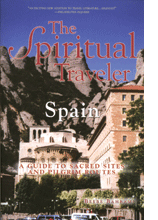
Over the past several years, Gazette readers have seen the byline of Dennis Drabelle G’66 L’69 on book reviews, personal essays, and several articles dealing with aspects of Penn history. This summer Drabelle, who is a contributing editor for The Washington Post Book World and has written for a number of other magazines, published Mile-High Fever: Silver Mines, Boom Towns and High Living on the Comstock Lode (St. Martin’s Press; $25.99).
Full of desperate risks, shady deals, and colorful characters, the book tells the whirlwind tale of the Great Silver Rush that started in 1859, and its unofficial capital, Virginia City, Nevada, “boozy, bawdy, well-stocked with luxury goods, and pasted onto a desiccated mountainside—a Babylon of the Great American Desert.”
Within 20 years, the Comstock Lode—named for an early prospector who attached his own name to the mining district through sheer verbal persistence—had gone from boom to bust. By then, some $300 million worth of ore had been extracted from the mines, but the silver rush’s most lasting legacy may have been to inspire a young printer-turned-prospector-turned-writer named Samuel Clemens to become Mark Twain. “It was in ‘the Silverland’ that Twain discovered not just his calling but how he might express it in his best works,” Drabelle writes. “The Comstock served him as both life-changing academy and copious thesaurus.”

Beebe Bahrami Gr’95, a former editor of Expedition, the Penn Museum’s magazine, and now an independent scholar and writer,has been the Gazette’s go-to person for all things archaeology- and anthropology-related, from the renegade Egyptian pharaoh Akhenaten to Charles Darwin and the Year of Evolution. She also wrote an evocative essay on her travels in Spain, “The Mother Hens of Andrín” [“Elsewhere,” May|June 2007].
In The Spiritual Traveler: Spain (Hidden Spring; $24.00), Bahrami draws on prehistory and historical accounts, oral histories and folklore, and her own experiences “walking around in remote wild vistas and congested cities, and always, always, talking to people in each place about their experiences,” to provide a comprehensive guide to the sacred sites and pilgrim routes of the country that “is today, and has been for millennia, a crossroads of myriad cultures from Africa, the Middle East, Europe, the Americas, and Asia.” Even as Spain rapidly modernizes, the sense of the sacred remains strong there, Bahrami writes, from the Camino de Santiago, one of the world’s great pilgrimage roads, dating from the ninth century, to the “new and old spiritualities, some native and others imported, but all sacred,” that have flowered in the post-Franco period.
—J.P.




